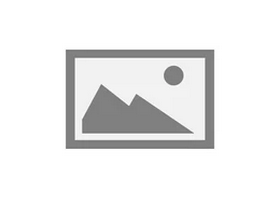What Health Hazards Are Associated With Water and Mold Damage?
Water and mold damage are common problems in homes and buildings, often due to leaks, floods, or excessive moisture. While these issues can cause significant property damage, they pose health hazards to occupants. This article will explore the health hazards associated with water and mold damage, the importance of understanding these risks, and what can be mitigated.
Understanding Water Damage
Water damage refers to the destruction or deterioration of a property due to excessive moisture or water intrusion. It can manifest in various forms, including:
- Flood Damage: Flooding can result from natural disasters like hurricanes, heavy rainfall, or internal factors like burst pipes. It can lead to extensive water damage.
- Leaking Roofs: Roof leaks, often caused by damaged or deteriorated roofing materials, can allow water to seep into the property, affecting ceilings, walls, and interiors.
- Burst Pipes: Frozen or damaged pipes can burst, releasing a significant volume of water and causing damage to walls, floors, and personal belongings.
- Sewage Backup: Sewage backups are particularly hazardous, as they can lead to severe water damage and health risks due to contamination.
- Appliance Malfunctions: Malfunctions in appliances like dishwashers, washing machines, or water heaters can result in water damage if not addressed promptly.
Health Hazards Associated With Water Damage
Water damage can give rise to various health hazards, including:
1. Mold Growth
One of the primary health hazards associated with water damage is mold growth. Mold can begin to develop within 24-48 hours of water intrusion. Exposure to mold spores can cause respiratory issues, allergies, and other health problems, particularly in individuals with sensitivities.
2. Bacteria and Contaminants
Water damage can introduce harmful bacteria and contaminants into the property, especially from sewage backups or contaminated water sources. These contaminants can pose serious health risks if not properly cleaned and sanitized.
3. Structural Damage
Water damage can compromise the structural integrity of a property. This can lead to safety hazards, such as collapsing ceilings or weakened foundations, resulting in injuries.
4. Electrical Hazards
Water damage can affect electrical systems and appliances, increasing the risk of electrical hazards such as shocks or fires.
5. Slip and Fall Risks
Excess water on floors and surfaces can create slip and fall hazards, potentially leading to injuries.
Understanding Mold Damage
Mold is a fungus that can thrive in damp and humid environments. It can grow on various surfaces, including walls, ceilings, floors, and personal belongings. Mold damage can occur due to water intrusion, high humidity, or inadequate ventilation. Mold can take on various forms and colors, including green, black, or white.
Health Hazards Associated With Mold Damage
Mold damage can pose several health hazards, including:
1. Respiratory Issues
Mold spores are easily airborne and can be inhaled. Prolonged mold exposure can lead to respiratory problems, especially in individuals with asthma, allergies, or compromised immune systems.
2. Allergic Reactions
Mold allergies can result in sneezing, coughing, runny or stuffy nose, skin rashes, and eye irritation.
3. Asthma Aggravation
Mold exposure can exacerbate asthma symptoms in individuals with the condition, potentially leading to increased respiratory distress.
4. Fungal Infections
In rare cases, mold exposure can cause fungal infections, particularly in individuals with weakened immune systems.
5. Irritation of the Eyes, Skin, and Throat
Mold can irritate the eyes, skin, and throat, leading to discomfort and health problems.
6. Neurological Symptoms
Some studies have suggested a potential link between mold exposure and neurological symptoms, although further research is needed to establish definitive connections.
What Can You Do About Water and Mold Damage?
Addressing water and mold damage promptly and effectively is crucial to mitigate health hazards. Here are the steps you can take:
Water Damage
- Identify and Address the Source of Water Intrusion: The first step in addressing water damage is identifying and rectifying the source of water intrusion. This could be a leaking roof, burst pipes, or any other factor leading to excess moisture within your property.
- Begin Water Extraction and Drying Immediately: Swiftly initiate the water extraction and drying. Removing standing water and thoroughly drying affected areas is essential to prevent further damage and mold growth.
- Remove and Replace Damaged Materials: Damaged materials like saturated drywall, insulation, and flooring must be removed and replaced. This ensures that the affected areas are restored to their pre-damage condition.
- Disinfect and Sanitize Affected Areas: Disinfecting and sanitizing the affected areas is crucial to eliminate bacteria and contaminants that may have entered your property through the water intrusion.
- Ensure Electrical Systems are Inspected and Repaired Safely: After water damage, it’s important to have your electrical systems inspected for safety. Qualified professionals should conduct any necessary repairs or replacements to avoid electrical hazards.
If you’re residing in freezing regions like Buffalo, the damage caused by water can be even more extensive due to harsh climate conditions. Investing in a Buffalo water damage restoration professional can mitigate this risk, thoroughly repairing the structural damage and completely eradicating microbial growth.
Mold Damage
- Identify and Eliminate the Source of Moisture: To address mold damage, you must first identify and eliminate the moisture source promoting mold growth. This could be related to ongoing leaks, high humidity, or inadequate ventilation.
- Isolate Affected Areas: Isolate the areas affected by mold to prevent the spread of mold spores to other parts of your property. This containment helps prevent further contamination.
- Use Appropriate Personal Protective Equipment (PPE): When cleaning mold-infested areas, you must use appropriate personal protective equipment (PPE) such as masks, gloves, and goggles to protect yourself from mold spores and contaminants.
- Clean and Remove Mold: Employ appropriate cleaning agents and techniques to clean and remove mold from affected surfaces. Thoroughly disinfect and sanitize to ensure that mold is effectively eliminated.
- Ensure Proper Ventilation and Humidity Control: To prevent future mold growth, maintain proper ventilation and humidity control within your property. Adequate ventilation helps in moisture reduction, discouraging mold development.
Despite the common availability of over-the-counter mold treatments, the health risks associated with mold damage are too significant to leave to DIY methods. Working with professional mold remediation specialists can ensure all traces of mold, even those invisible to the naked eye, are thoroughly eliminated, further ensuring your property’s safety and longevity.
Conclusion
Water and mold damage can have serious health implications for property occupants. Understanding the health hazards associated with these issues is essential for taking prompt and effective action to mitigate the risks. By promptly addressing water and mold damage, following safety protocols, and seeking professional assistance, property owners can protect their health and well-being and ensure the safety and habitability of their properties.


